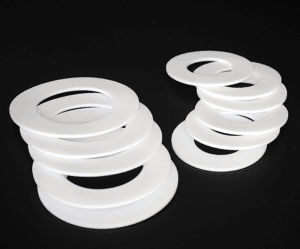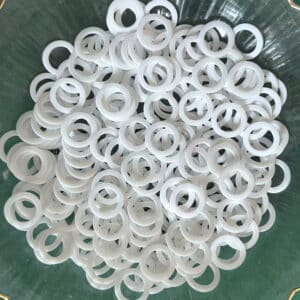I once struggled with seal degradation in oil-heavy systems. The material you choose matters more than you think — especially between Buna O-rings Und Nitril-O-Ringe.
So, what’s the difference, and which one performs better in real applications?

Let’s compare these two materials in terms of oil resistance, temperature range, pressure stability, and best-fit applications.
Which material is more resistant to oils and fuels?
When it comes to petroleum-based systems, choosing the wrong material can lead to premature failure.
Buna O-rings outperform standard nitrile rubber in harsh oil and chemical environments.

| Eigentum | Buna O-Rings | Standard Nitrile O-Rings |
|---|---|---|
| Ölbeständigkeit | Excellent for fuels and lubricants | Strong, but less durable over time |
| Chemische Beständigkeit | Better resistance to bases/acids | Moderate, may swell in harsh solvents |
| Fuel Compatibility | Great for gasoline, diesel, biodiesel | Works with most, but not biofuels |
Want the full overview? Read our Buna O-Rings Guide or deep dive into Nitrile O-Rings Guide.
Which one handles temperature and pressure better?
If your seals are exposed to heat, cold, or high PSI — choose wisely.
| Zustand | Buna O-Rings | Nitril-O-Ringe |
|---|---|---|
| Temperaturbereich | -40°C to 121°C | -40°C to 107°C |
| Druckbeständigkeit | Strong under moderate pressure | Can harden under extreme load |
| Kälteflexibilität | Slightly rigid below -40°C | Remains flexible slightly longer |
💡 For better temperature range, gehen Sie mit Buna O-rings. For low-stress systems, nitrile is sufficient and more economical.
Which applications are better suited to each?
Use cases matter — here’s when I personally choose one over the other:
Buna O-Rings Are Best For:
- Fuel systems in vehicles and boats
- Hydraulic cylinders in industrial equipment
- Aerospace fluid systems
- Marine seals under harsh conditions
Nitrile O-Rings Are Best For:
- Air compressors and pneumatic fittings
- General plumbing or water handling
- Low-pressure HVAC units
- Cost-sensitive sealing tasks
Entdecken Sie unsere Metric Buna O-Ring Guide if sizing is your next step.
How do I choose between Buna and Nitrile?
Still unsure? Use this quick comparison chart:
| Szenario | Beste Wahl |
|---|---|
| Fuel & Oil Exposure | Buna O-Rings |
| Budget-Conscious Industrial Use | Nitril-O-Ringe |
| High Heat Resistance | Buna O-Rings |
| Low-Pressure Systems | Nitril-O-Ringe |
| Chemical Contact | Buna O-Rings |
Need fast help? Chatten Sie mit uns auf WhatsApp and get the right material in minutes.
Abschluss
For oil-heavy and chemical-prone environments, I trust Buna O-rings every time. For general industrial tasks, nitrile delivers solid value.
Material selection is the difference between leak-free performance and unexpected failure.
Let us help you choose the right sealing material
📩 E-Mail: [email protected]
📞 WhatsApp: +86 17622979498
Related topic
- FKM vs NBR: Which to Use?
- Rubber O-Ring Kits: What to Choose
- Metric Buna O-Rings Guide
- O-Ring Buying Guide
- O-Rings for High Heat & Oil



